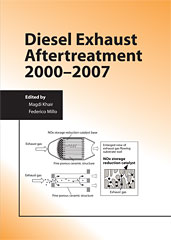Technical Paper
Unregulated Emissions Characterization and Comparison for Two Off-Road Applications: A DPF and Non-DPF Engine
2022-03-29
2022-01-0587
As governmental agencies focus on low levels of the oxides of nitrogen (NOx) emissions compliance, new off-road applications are being reviewed for both regulated and unregulated emissions to understand the technological challenges and requirements for improved emissions performance. The California Air Resources Board (CARB) has declared its intention to pursue more stringent NOX standards for the off-road market. As part of this effort, CARB initiated a program to provide a detailed characterization of emissions meeting the current Tier 4 off-road standards [1]. This work focused on understanding the off-road market, establishing a current technology emissions baseline, and performing initial modeling on potential low NOx solutions. This paper discusses a part of this effort, focuses on the emissions characterization from two non-road engine platforms, and compares the emissions species from different approaches designed to meet Tier 4 emissions regulations.

